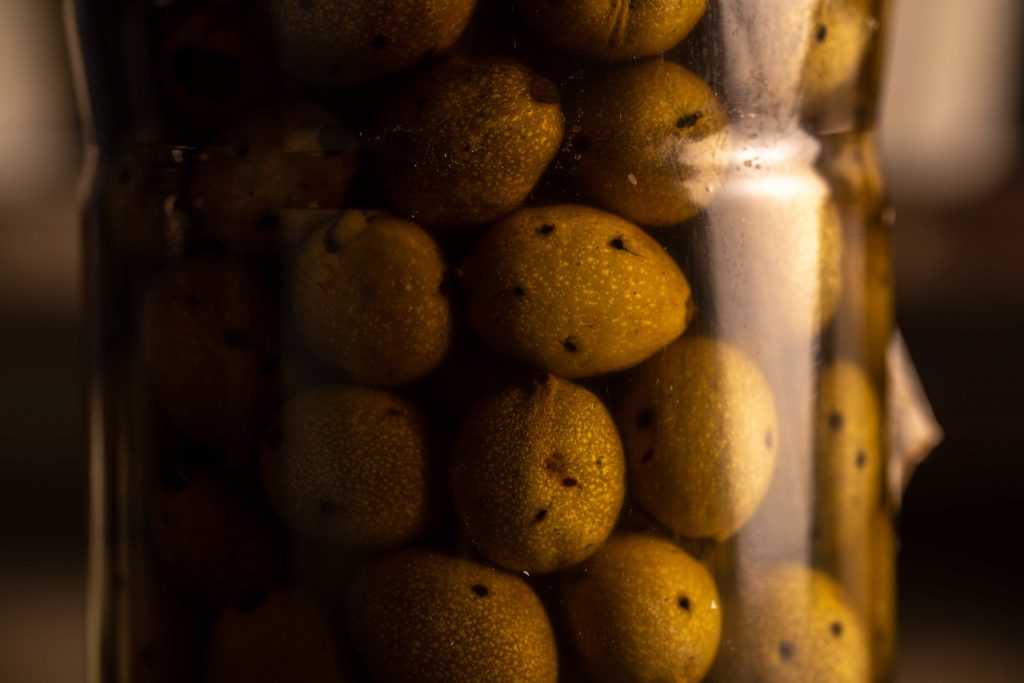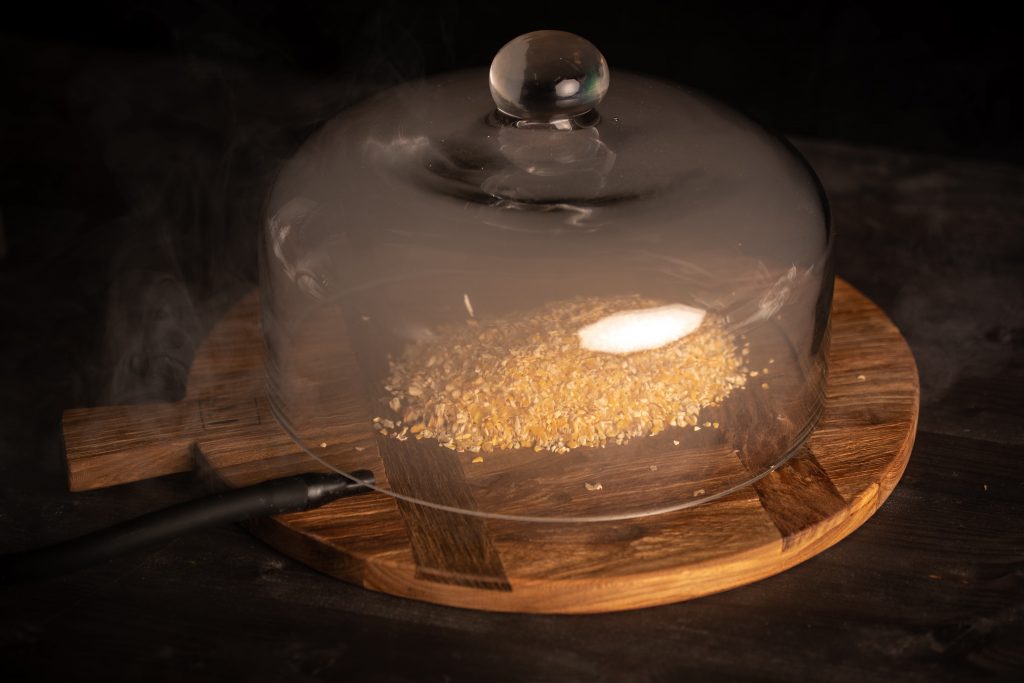If you’ve already started making bread for a while now and you have practiced quite a bit, you may find yourselves in a spot where your bread is OK, but you may feel that it needs a bit of oomph. So, how do you get from an OK bread to a great memorable loaf?
We’ll start by saying something we keep saying for a few years now. Bread should not just be OK, just a humble addition to a great meal. If you treat your bread right, it can come out being spectacular and can easily be turned into the star on your dinner table. Because people have been more concerned with how to make more and not necessarily better food for the past decades, we have reached a point where the market is flooded with poor quality unhealthy breads. But just because you make your own bread or if you buy it from an artisan bakery or even the fact that it’s sourdough is not a guarantee that it will be an amazing, all out experience. There can be as much variety in breads as there is in food and bread can also shine, just like an amazing dish can. Now you may not want to go through all the fuss all the time and that’s OK, but what do you do when you are tired of the same tasting old loaf? A few of our thoughs.
But first. How do you evaluate a loaf?
You may not have thought about this, but worry not, we have done it for you. Bread overthinking is what we do. 😊
First we eat with our eyes, they say. So a good bread also needs to look good in order to be tempted to taste it. In order to make a good looking bread you need good ingredients as well as good technique – from dough kneading to the way you tend to your dough during fermentation, the strech&folds you apply, pre-shaping, shaping, scoring and baking, every step of the way is important in order to get a great loaf.
Then comes the smell (yes, believe it or not, that also matters). Taste and smell are actually inter-dependent, as partly taste is due to the compounds in your food that you smell. You know that all-familiar freshly baked bread smell that fills your kitchen and your house.
Taste, of course. We are always looking for an interesting, unique flavor, one that sticks with you once you have tasted it. For us, the easiest way to decide whether a bread we made is a winner is to simply ask whether it is a loaf that you will remember, then it’s a winner. If not, tweak the recipe to try and make it memorable. Gustul este, desigur, cel mai important. Noi suntem mereu în căutarea unui gust interesant, bogat, memorabil și cea mai ușoară modalitate pentru a decide dacă o pâine pe care o testăm e câștigătoare și va fi introdusă în meniu este simpla întrebare: “Dacă ai să mănânci pâinea asta o să îți atragă atenția? E un gust care să îți rămână în minte?”
Choosing your flours
As flour is the main component of a loaf, it does make sense that choosing the right flour is important, right? Just like a chef needs prime ingredients to make a spectacular dish, so does a baker in order to make a great bread. So how do you define a good flour?
- First you must consider the type of bread you are going for. If you are going for an open crumb loaf, you might want to use a strong bread flour (manitoba). However, we always think of this kind of flour like a white canvas that gives you a place to draw on, it helps in building the structure of your loaf, but it is not particularly tasty in itself.
- You need to make sure your flour is not contaminated. This may happen more easily than you think, either with molds from the environment or, worse, with flies and other unwanted guests. No, you don’t need to have your flour tested in a lab to use it, but do take a good look at it before using, it may save you a lot of work.
- What is always very important to us when choosing flours from the multitude of suppliers out there is consistency. Mills that have been doing this for generations have implemented strong procedures that deal with the entire chain, from farming and grain traceability up to how the grains are processed, washed, de-hulled and then milled. It’s a much more complex work than it might seem and that is what you’re paying for when you’re buying a good flour – the fact that you know what you are getting.
- It is paramount that you first understand the features of each flour – a good beginning is the article regarding Flours.

Marinating olives with spices before adding them to dough
How do you get that memorable taste?
How do you raise your game from an OK loaf to a great one, you ask. A few suggestions.
- The way you combine flours. After you have established the kind of loaf you are going for (is it a white wheat loaf, is it a dark rye, is it a brioche), think how you could include other, atypical flours to your dough. Most recipes call for only one or two types of flour for a bread, but that doesn’t mean you can’t think outside the flour box. Even slight varioations, where you replace 5-10% of total flour can work wonders. A few examples:
- Use 5-10% wholemeal flour, even if you’re going for a white bread or even a brioche. The wholemeal flour will add flavor, as you’re using the nutrients from the entire grain.
- Rye flour. We use rye flour in almost all recipes, as it does wonders both regarding flavor depth, as well as aid fermentation, as rye contains simple sugars that are more available to the beasties in your sourdough starter. Even 5% rye flour will work its magic on almost every type of dough.
- Ancient grains. A great way to improve the flavor profile of any loaf is to use ancients grains, whether it is spelt, emmer, einkorn, kamut, durum wheat (semolina). This kind of grains can impart great flavor to your dough, even if used in small proportions. When working with ancient grains, don’t forget they can be quite messy – spelt, einkorn or emmer have a very reduced capacity to form gluten networks, so using more than 30% of total flour could leave you with a very sticky dough. Kamut and durum are much easier to work with and our go-to cereals when trying to strike a balance when using flour that are both tasty and workable.
- Other flours. You can use any kind of flour to improve flavor in your doughs. Buckwheat is a great choice (it is also gluten-free) and you can use it in both gluten-free breads, but also as an interesting addition in your regular loaves as well. If you’re aiming for an open crumb loaf, don’t overdo it with buckwheat, as it may wreck havoc in your gluten structure, you will feel the difference even if you only use 5-10% buckwheat. You can try out corn flour or even polenta as an addition to your breads. The sky’s the limit.
- Dough liquids. Sure, water is most common fluid you use in your doughs, but you can also reserve a small portion for other liquids, such as oils (olive oil is a great addition), honey, maple syrup or whatever else inspires you.
- Inclusions. Inclusions are solids you add to your dough, such as seeds, nuts, olives, spices, fruits or vegetables. However, you do need to consider the respective features of inclusions when you work them into the dough (seeds will absorb water, so you should soak them beforehand, nuts will release oils into the dough). If you use fresh fruits or vegetables, they might release moisture into your dough, so you might want to reduce dough hydration. Try them out, make mistakes, learn from them, there is no other way.
- Technique. It is as important as using great ingredients. From the way you knead your dough (e.g. if you over-knead your dough, that can heat it up as well as oxidize it, so it makes little difference if you used great flours in your dough) to the way you tend for it during fermentation, strecthing and folding, preshaping, shaping, scoring and baking are all paramount to the end result.
- Other techniques. Last, but not least, you can use techniques pertaining to cooking in order to lend your loaves some great character. Chefs use all sorts of cooking or preserving techniques to prepare their ingrediends and make them shine, so shouldn’s bakers do the same? You can pre-bake or toast some ingredients (e.g. toasting your seeds before soaking them will greatly improve their taste). You can infuse your ingredients with flavor before you add them to your dough (e.g. marinating your olives in olive oil and adding various spices will surely make them tastier and you can alsi use that olive oil in your dough – because oil is a liquid, the olive and spices flavor you’re going for will be imparted to the entirety of your dough as opposed to only the bits where you can munch on an actual olive. You could also smoke your ingredients with various kinds of wood. You can use any cooking technique to prepare your ingrediends – toasting, frying, pre-baking, marinating, infusing, smoking, anything goes.

There are no limitations apart from your own imagination and once you go further than the usual ingredients and techniques, you may find yourself in a place where your concept about what a bread can taste like is changed forever. Try, play with your food, experiment. You might even have a great deal of fun doing it.
Happy baking & go bake the world a better place!
